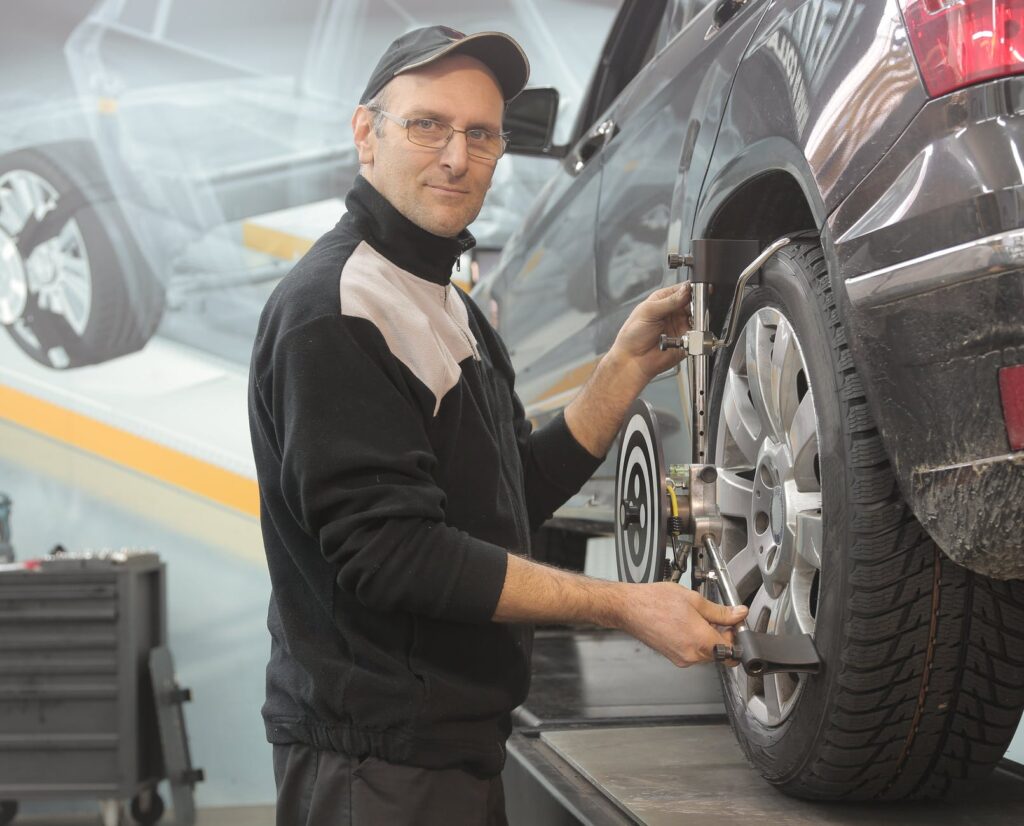For most of us, wheel alignment brings to mind the alignment of the front wheels. Understandably so, because that is what has been going on for years. But times have changed, and so have cars. Most of the modern cars today have an independent rear suspension, which means that rear wheels ALSO NEED alignment. This is especially true for 4-wheel vehicles, and misalignment of rear wheels can have equally adverse effects as front wheel misalignment. Unfortunately, a vast majority of drivers are unaware of this and possess the knowledge related to the conventional front wheel alignment only.
Wheel alignment is one of the very crucial aspects of a vehicle, and one could argue, equally underrated. This is mainly due to the fact that while other obvious damages can be seen by an amateur, this one needs a technician for the diagnosis, until it is severe enough. Wheel alignment is more of a repair work, rather than regular maintenance. This means that you would have to keep a vigilant eye on it to catch any discrepancies. Proper rear alignment will not only make your ride safe, smooth and comfortable, but also add significantly to the tires’ wear life.

Why do rear wheels need alignment?
Rear wheels can get misaligned due to the same reasons as the front wheels. Wheels are the focal point of a vehicle and effectively carry out the function of it. So it’s a no-brainer that their fixation and balancing is critical for the vehicle. Especially important angles are the camber – the angle between the vertical axis of the wheel and the vertical axis of the vehicle, and toe –the symmetric angle that each wheel makes with the longitudinal axis of the vehicle. These can get out of the ideal limits due to a plethora of reasons. The reason can be as small as over speeding, and as big as hitting a pothole or getting in an accident. Any major shock or sudden change in dimension, speed or momentum can become the cause of displaced rear wheels. Similarly, driving over very rough surfaces, exceeding the load capacity of the tire and frequently hitting bumps can also affect the suspension, resulting in misaligned rear wheels.
Signs that rear wheels need alignment:
Any changes in the angle of the suspension, and consequently the alignment of the rear wheels can be definitely caught through an alignment machine only. Nonetheless, there are certain obvious signs that could hint that your rear wheels need alignment!
1. Car pulls to one direction:
This is one of the most likely indications of a wheel misalignment. If your car tends to get pulled to a specific direction frequently, getting the wheel alignment tested might be worth a shot.
2. Vibration during driving:
If your car vibrates out of the blue, at moderate speed or on smooth surfaces – basically under any condition that it should not vibrate, wheel alignment might be the real culprit. Undue shaking of the steering is also a noticeable sign that your wheels need alignment.
3. Fast wearing tread:
When the wheels of the vehicle are not aligned properly, the contact of the tread with the road is imbalanced. This can cause rapid wearing and a significantly shortened tread life. Feathered tires are usually an indicator of misaligned wheels. This means that the tread is more worn out on one side than the other. If you catch this, you know what to do.
Do rear wheels need special alignment?
The alignment of rear wheels is relatively new to the industry, and is mostly required for modern four-wheel vehicles. For most old vehicles, the thrust alignment method is used and it applies to front wheels only. In this method, the placement and position of rear wheels is used to position the front wheels. However, for aligning the rear wheels in addition to front wheels, a four-wheel alignment is necessary. This technique is comparatively new, and is reserved for the vehicles that have an independent rear suspension. As might be expected, this special alignment is costlier than the conventional one, and is sometimes referred to as the premium alignment.
How frequently do rear wheels need alignment?
As mentioned earlier, wheel alignment does not typically fall under the category of regular maintenance checks. This means that special attention would be required from the driver to make sure that any changes in alignment of wheels are not left uncaught. Better safe than sorry, right?
The need for correction in alignment of rear wheels depends mostly on the quality of the ride. If you live in an area with poor driving conditions and have bumpier rides, you will need to get your wheels aligned much more frequently. Similarly, if you tend to drive at high speed, or carry heavy loads on your vehicle, a frequent check up on the rear wheel alignment is recommended. However, for regular vehicles and drives, it is ideal to get the alignment fixed every one or two years, or more precisely after every 5000-6000 miles.
